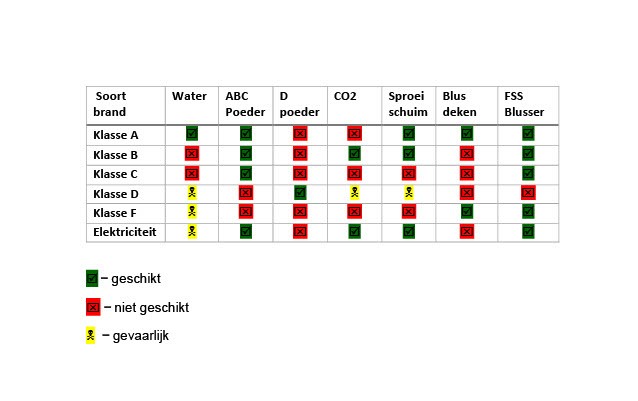A fire class is a group of similar fires, ordered by the nature and size of the burning substances.
This is particularly important when fighting a fire with a fire extinguisher. The fire class is shown by a pictogram and the relevant letter on the fire extinguisher.
Class A: indicates suitability for extinguishing solids such as wood, paper, textiles, etc.
Class B: indicates the suitability of the extinguishing agent for extinguishing liquids and liquefied substances, such as oil, petrol, grease, etc.
Class C: indicates the extinguishing agent’s suitability for extinguishing gases, such as butane, propane and natural gas (when extinguishing gases, make sure that the gas supply can be shut off afterwards, otherwise you will get a gas cloud that can explode afterwards at an ignition source).
Class D: Indicates that the extinguishing agent is suitable for extinguishing combustible metals, such as magnesium, aluminium, sodium, potassium, zirconium, lithium, etc.
Class E: electrical fires: Is actually a class A/B fire, produces toxic gases, do not extinguish with water or foam. If possible, switch off electricity. Do extinguish with CO2 or powder. In principle, this class does not belong to the different fire classes.
Class F: Indicates that the extinguishing agent is suitable for extinguishing very hot oils and fats, of which the quantity is more than 5 litres, for instance large deepfrying ovens
(Plaats hier de tabel).
Fire classes Classification Fire Stop Sticks Netherlands
